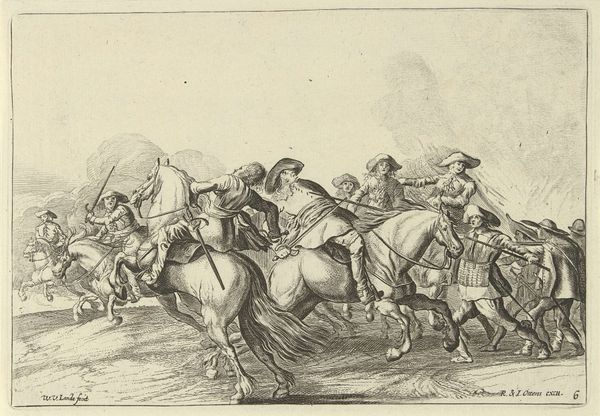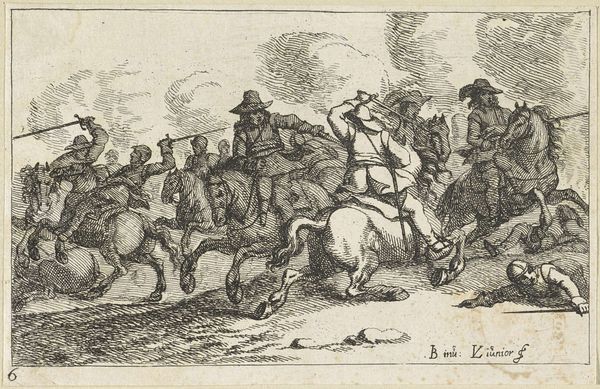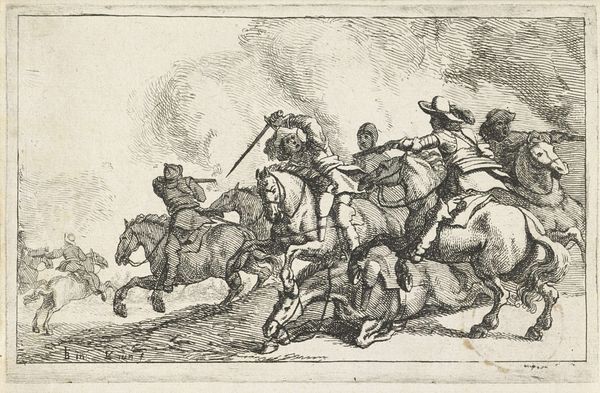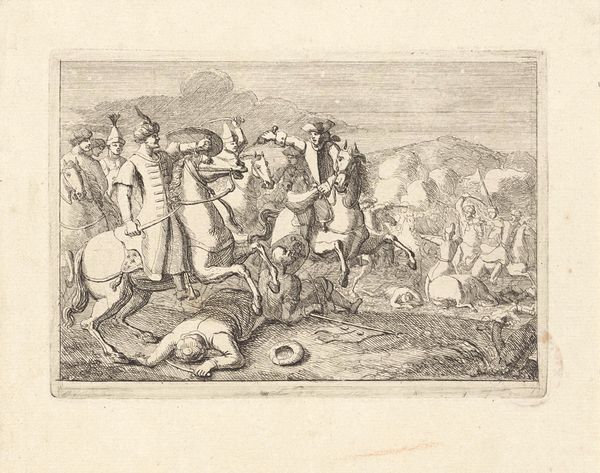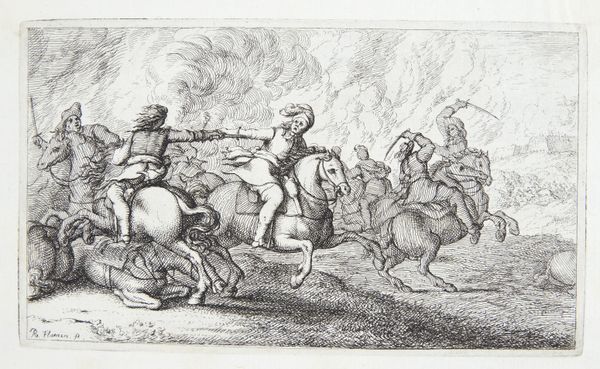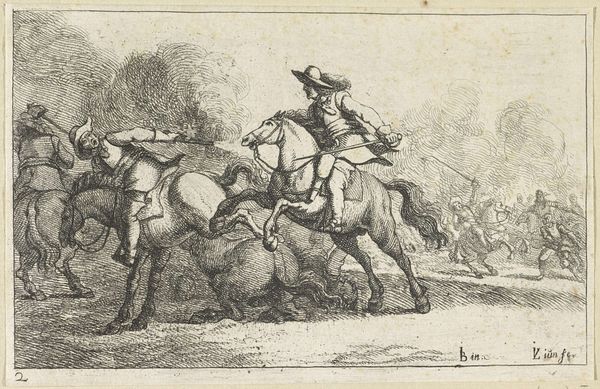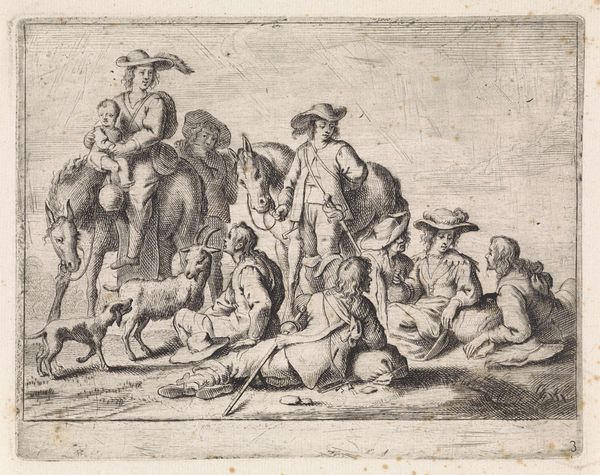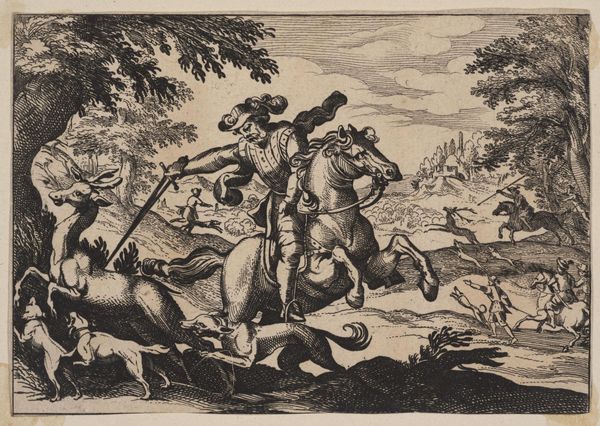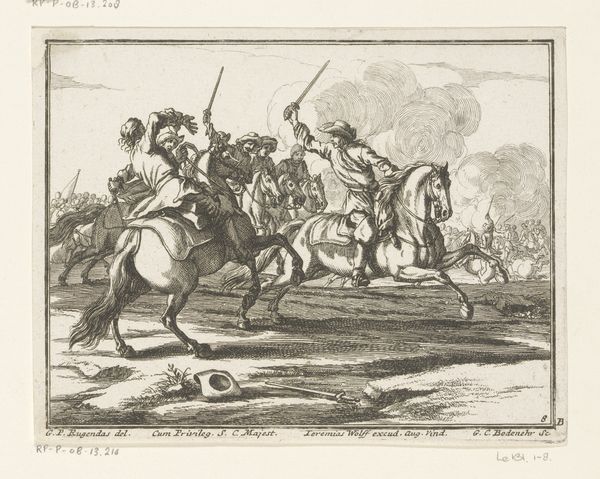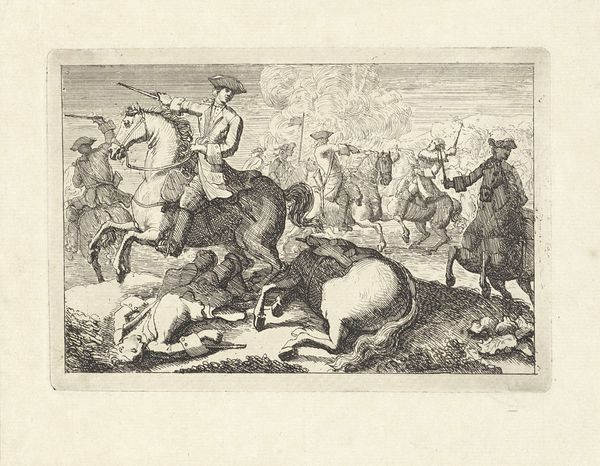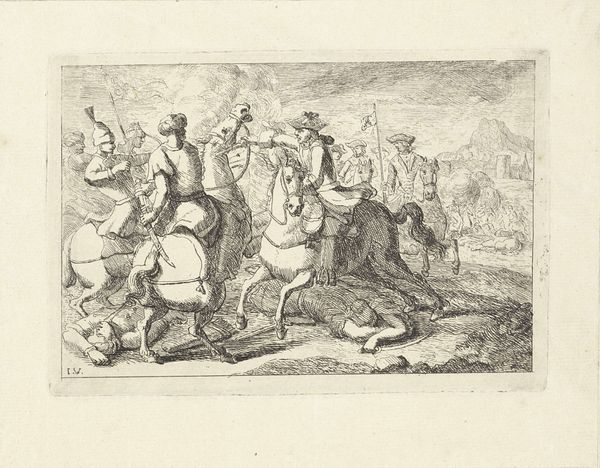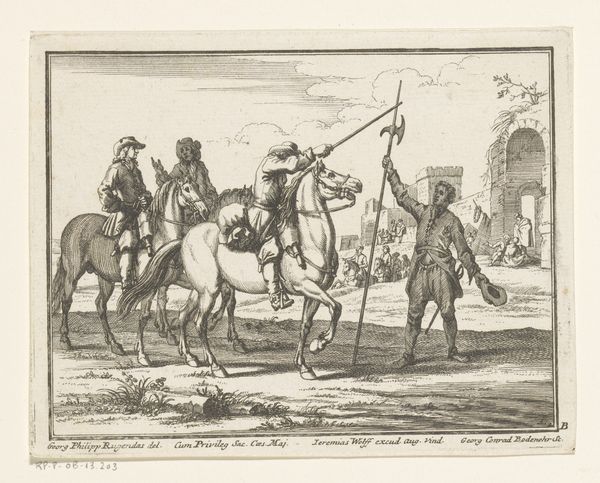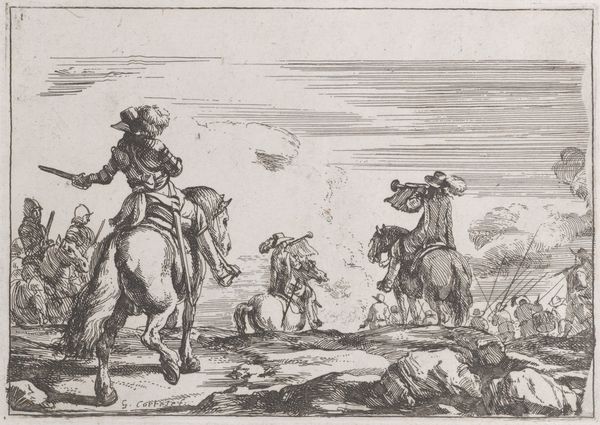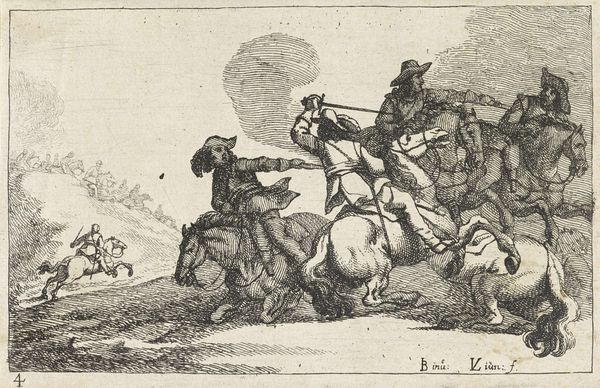
print, engraving
#
baroque
# print
#
landscape
#
figuration
#
genre-painting
#
history-painting
#
engraving
Dimensions: height 140 mm, width 202 mm
Copyright: Rijks Museum: Open Domain
Curator: Immediately I am struck by the dynamism, the sheer energy of the scene. It feels almost cinematic, doesn't it? Editor: Absolutely! And look, smoke billows in the background— chaos reigns. You almost feel thrown right into the middle of the fracas, despite it all being rendered in grayscale. Curator: What you are taking in is “Slagveldscène met neergestoken ruiter”, translated to "Battlefield Scene with Stabbed Rider," an engraving made between 1635 and 1652 by Willem van Lande. Editor: Stabbed rider is right! Zooming in, I catch the moment one rider, spear in hand, overtakes another who is practically falling off his steed! What resonates with me here is Lande's ability to create such drama from simple lines, even small details like flailing arms create maximum emotional impact. It's the drama that keeps you hooked, for sure. Curator: Indeed. The recurring motif of fallen men speaks volumes here. This wasn't simply about chronicling events as they were but creating symbolic impact of mortality during a period in European history filled with conflict. The chaotic jumble speaks to themes of loss and turmoil in times of war. Note, for instance, how those rising plumes on the horizon become metaphors themselves, mimicking and intensifying that state we identify as chaos or tragedy so visually rendered here today still. Editor: Tragedy is definitely a word for it. There's almost a dark ballet playing out; an intense scene imbued both fear, yet undeniable movement too. Do those gestures signal desperate struggles for freedom? The image pulls viewers inward immediately toward questioning themes regarding agency in crisis events; are participants willingly shaping things via choice now – versus being thrust instead through historical storms past human scale controls altogether? Curator: Your point echoes what I often interpret about it through symbol– that humanity becomes consumed. Perhaps it argues those powers pull on strings toward outcomes reflecting not simple fate nor merely human plans! Lande suggests it runs much, much deeper: weaving elements evoking primal conflict. It's an almost uncomfortable truth that even something made entirely digitally captures this timeless unease so strongly all time seems very small. Editor: An unease resonating because those threads link times too perhaps more firmly compared simply passing echoes? Well that indeed remains powerful point regarding connection which has truly sparked within even further thoughts thanks due. Curator: I couldn't concur better. Now it remains open – to any other visitors and scholars present so too let perspectives branch widely and freely now ahead...
Comments
No comments
Be the first to comment and join the conversation on the ultimate creative platform.
